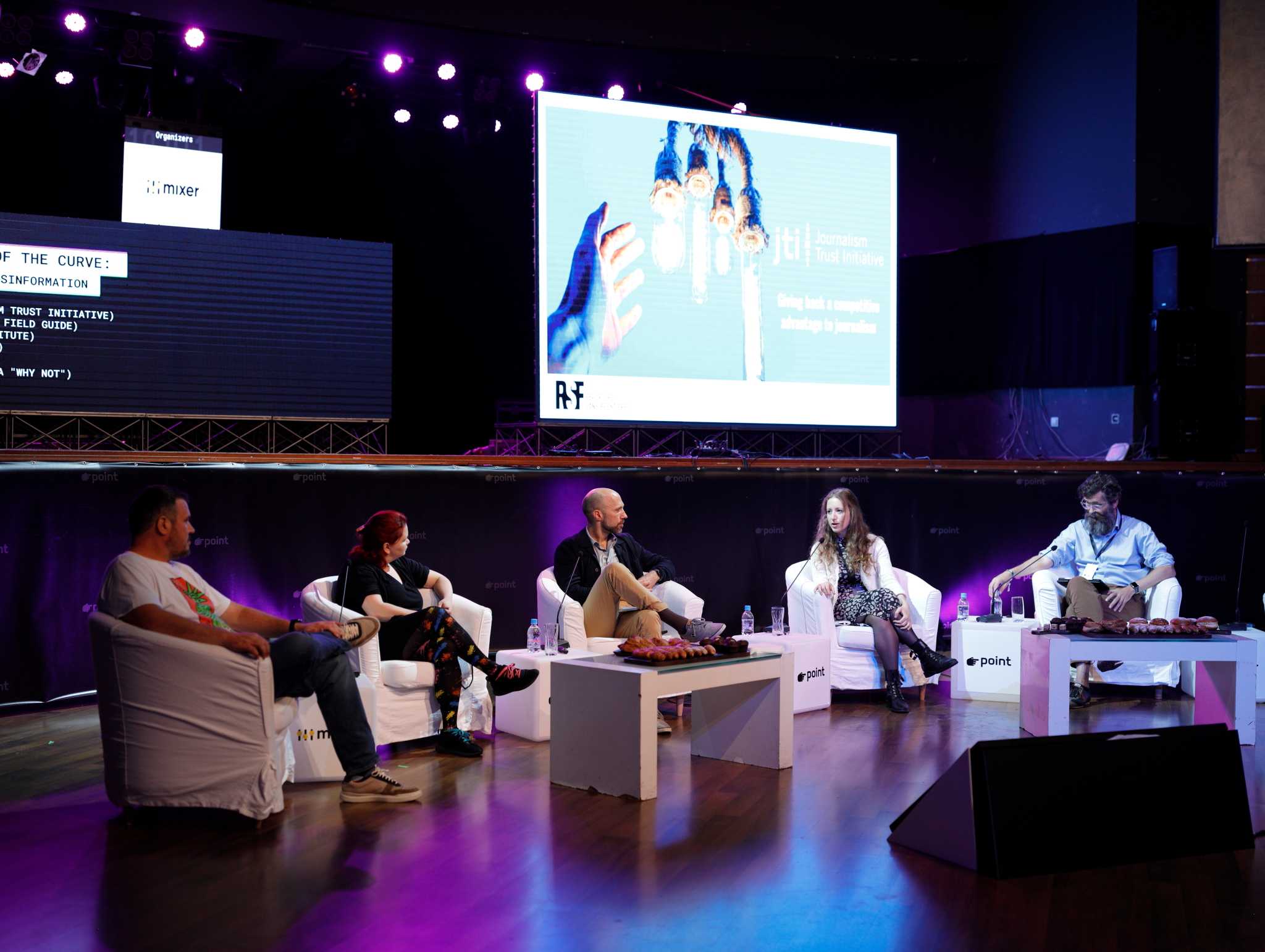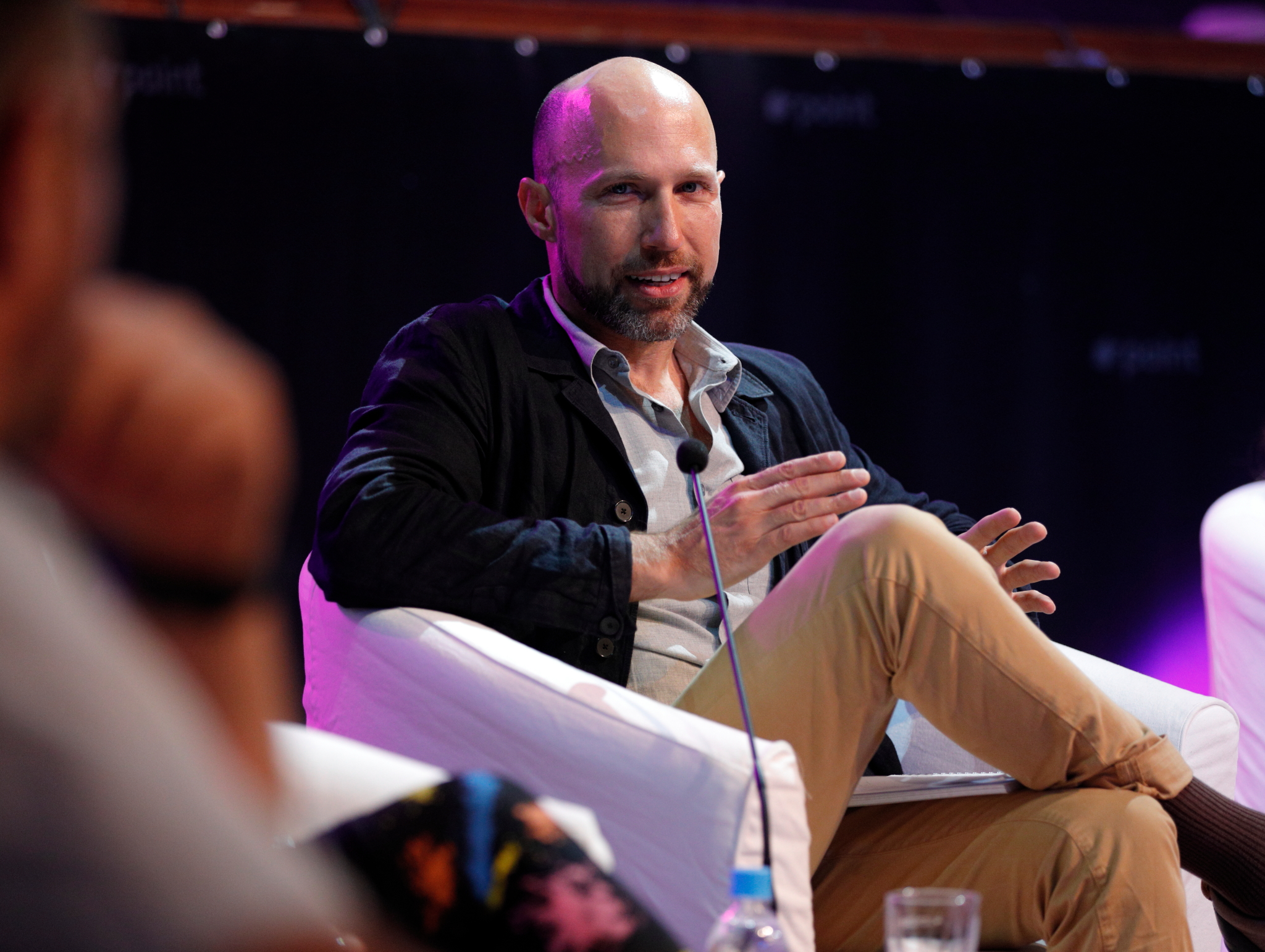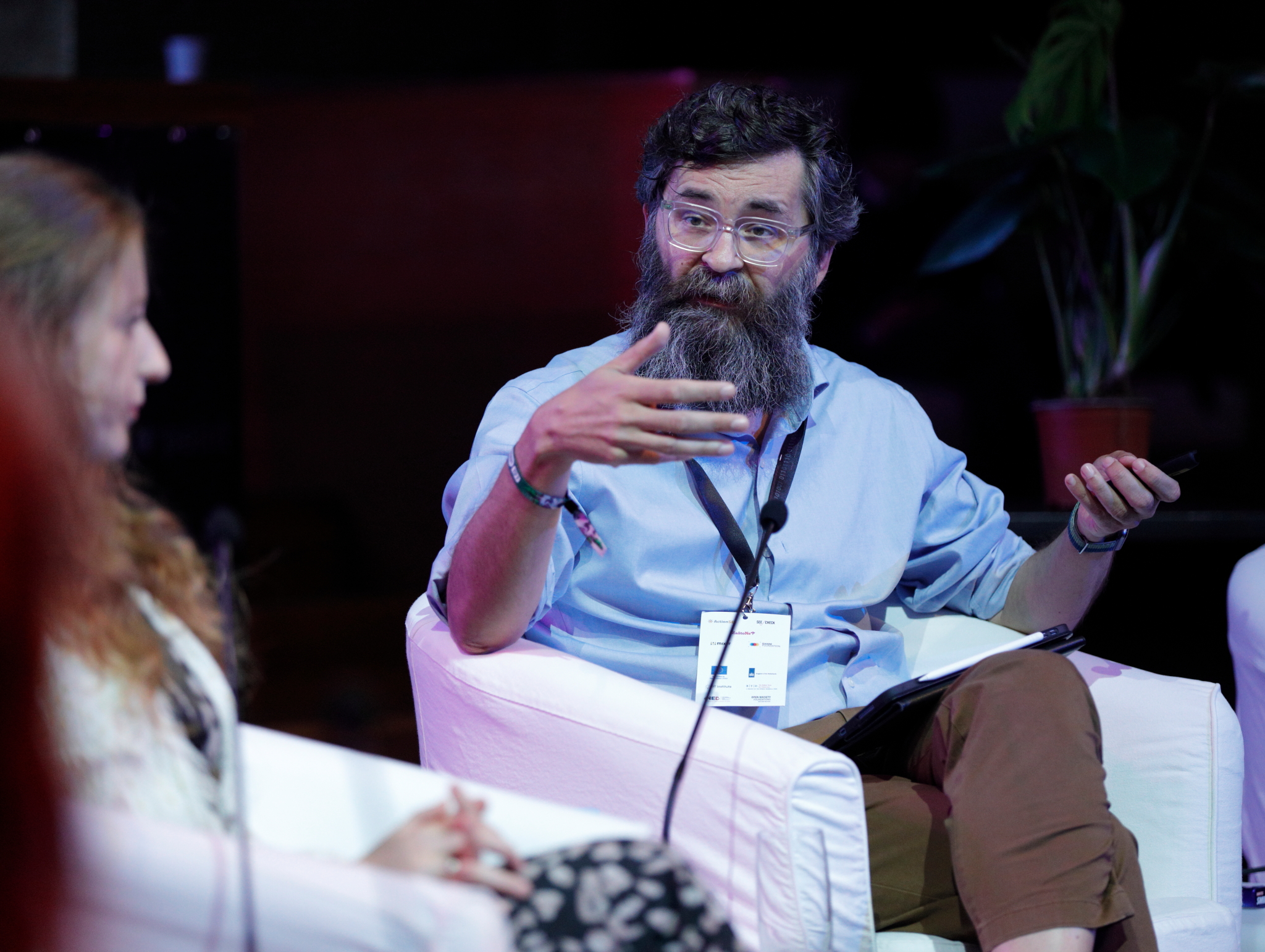Trying to get ahead of the curve: Innovations in fighting disinformation
The second panel of the second day of the POINT 1011 Conference was all about discussing innovative ways to counter the spread of disinformation. The panel was moderated by Darko Brkan from CA “Why not”, and the panellists were Chloé Fiodiere from Journalism Trust Initiative, Matt Stempeck from Civic Tech Field Guide, Vukašin Petrović from DT Institute and Minja Bogavac from Center E8.

Photo: Vanja Čerimagić
After introducing the panellists, Brkan proposed a question about the current ways that the panellists are working on tackling disinformation.
After explaining how E8 works and what it does in the field, Bogavac pointed out that, at E8, they are mostly using the trans-media storytelling approach to fight disinformation. As she explained, E8 uses various types of media to reach the audience and communicate the values they are promoting. For example, one of the things E8 does is create theatre performances about the topic of disinformation.
“Fact-checking in Serbia is done in microenvironments, in families, neighbourhoods, maybe in work collectives. But people actually trust only if they have this heart-to-heart or fact-to-face conversations”, said Bogavac. In order to somehow get into those environments and have an impact, E8 went back to pedestrian activism, and they created a network of 140 activists who are active in 33 cities in Serbia. Activists are doing door-to-door campaigns, discussing the problems with regular citizens, and E8 writes about them.
Stempeck pointed out that he is a little sceptical about doing individual fact-checking, since, in his opinion, a more holistic approach is more fitting. As Stempeck explained, disinformation is a chronic issue now and it can’t be solved with a silver bullet.

Photo: Vanja Čerimagić
“If you look at fighting disinformation as a three-step process, you monitor the media and you know what’s being said, you might do some verification, fact-checking, debunking as a step two. Step three that very few groups actually get to I think is counter-messaging, interventions, and amplifying the truth. And that’s where we have the impact”, said Stempeck.
Fiodiere pointed out that the different perspectives other panellists have are very valuable. As she explained, JTI is a systemic solution that has been built collectively. The idea of it is based on identifying and rewarding good journalism and giving concrete advantages to media outlets.
Our relationship with democracy is an emotional one, said Petrović, explaining how people are willing to do a lot of things in the name of it.
“Disinformation and authoritarian narratives promote basic human values that are of importance for authoritarian rule. So they promote the values of conformity, security and tradition. The closer we hold those values, the more likely we are to not just be apathetic but to actively support authoritarianism”, said Petrović. People working to counter those trends are not good at appealing to emotion, and that’s where they lose. However, as he pointed out, millennials give hope for the future.
As a good way forward, Petrović pointed out that we need to work on integrating good values into pop culture.
“Democracy and human rights language should be hot and popular and communicating”, said Bogavac, explaining what we can do to fight disinformation more effectively. As she explained, people still trust each other in heart-to-heart communication and people do want to hear what young people have to say if they are communicating messages in good ways.
Stempeck pointed out that one of the important things is to give people venues, such as the POINT conference, where they can talk about their work and learn from each other.
Fiodiere said that the idea of JTI in this context is to provide an objective tool for stakeholders to have a useful list of media outlets to use for various purposes.

Photo: Vanja Čerimagić
Thinking and working going forward with creative professionals to create a generation, not just of journalists or content creators but of creative professionals that are going to be committed to promoting human rights and democracy is one of the key elements”, concluded Petrović.
Author: Marija Ćosić